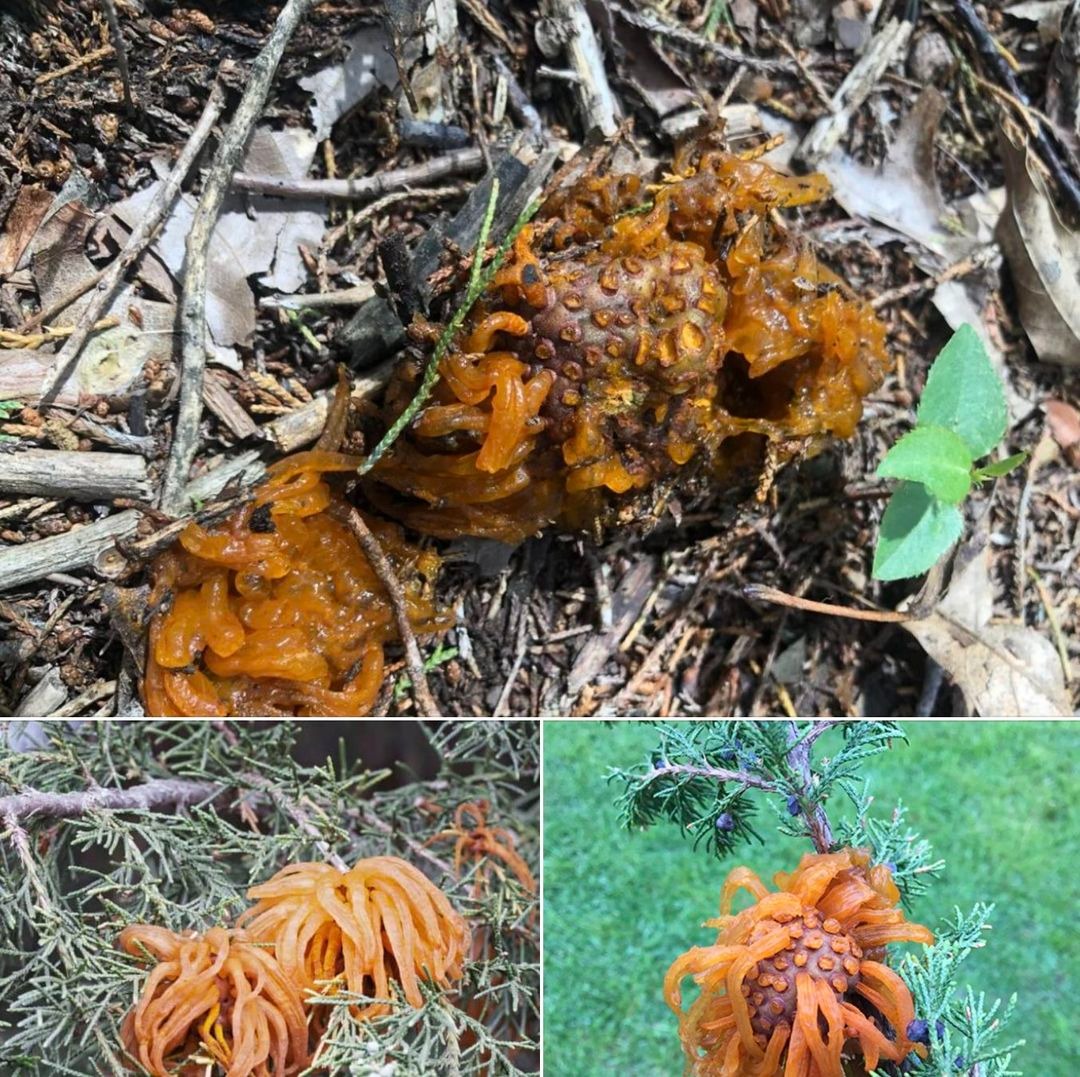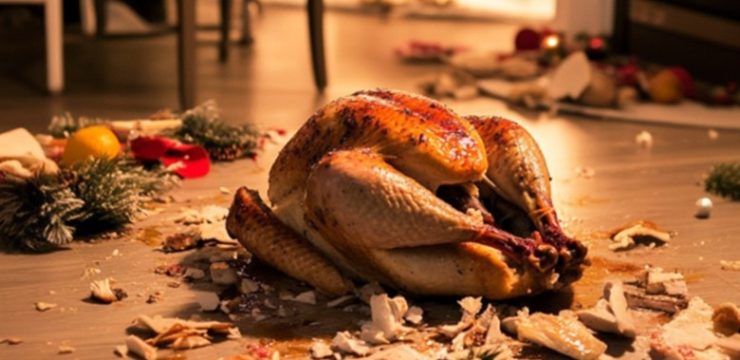Taking care of your backyard plants can be a rewarding hobby, but it’s not without its challenges. Every now and then, you might encounter something unusual that leaves you scratching your head. This happened to a Reddit user from Oklahoma, who recently discovered some strange growths in their trees—yellow jelly-like substances and what they described as a “jelly alien nut.” Confused, they turned to the internet for answers.

The culprit behind this mysterious phenomenon was identified as cedar-apple rust, a fungal disease that requires two host plants to complete its life cycle. Despite its name, the disease doesn’t only affect cedar trees. In fact, it often impacts juniper trees as well, along with apple and crabapple trees. If you’ve noticed similar signs in your own garden, understanding cedar-apple rust can help you manage it effectively.
How to Identify Cedar-Apple Rust
Cedar-apple rust presents differently depending on which tree it infects. On juniper trees, the first sign is the development of brown, persistent galls that grow on the twigs. These galls are round and firm, but when spring arrives and the weather becomes damp, they transform by growing orange gelatinous horns. While the sight can be alarming, the juniper tree itself is usually not severely harmed. Only the twigs near the galls might die, but the rest of the tree will typically remain unaffected.
On apple or crabapple trees, cedar-apple rust appears as yellow circular lesions on the leaves shortly after the trees bloom. As summer progresses, these lesions turn into brownish tufts or cylindrical tubes, often found on the undersides of the leaves, twigs, or even fruits. This can affect the tree’s overall appearance, but it does not usually cause serious damage to the health of the tree.
Understanding the Life Cycle of Cedar-Apple Rust
Now that you know how to spot cedar-apple rust, you might be wondering how long this fungal disease lasts. The life cycle of cedar-apple rust begins when galls form on juniper trees about seven months after the initial infection. These galls grow and become gelatinous lumps after 18 months.
The most noticeable stage occurs in spring, when telial horns—long, spore-producing structures—emerge from golf-ball-sized depressions on the galls. These telial horns turn bright orange when it rains, releasing spores into the air. Once the spores are released, the horns collapse, dry out, and fall off. However, the galls themselves remain on the tree for another year before they die. The most visible sign of infection is when these galls are covered in gelatinous masses, typically in the springtime.
How to Manage Cedar-Apple Rust
The good news is that cedar-apple rust is not difficult to manage, and it generally doesn’t pose a significant threat to the overall health of your trees. The key to handling this infection is to prune the affected areas of your trees. By cutting away the infected branches, you can stop the spread of the fungus.
For a more preventative approach, you might want to plant apple varieties that are resistant to cedar-apple rust. This reduces the likelihood of the disease taking hold in the first place. Another option is to use fungicides on susceptible trees, especially in early spring when the galls are most active in producing spores.
It’s important to remember that cedar-apple rust is primarily a cosmetic issue. It may impact the appearance of your trees, but it won’t kill them. Understanding the disease and taking timely action will keep your garden healthy without too much worry.
Conclusion
In conclusion, cedar-apple rust can be an unusual sight in your backyard, but it doesn’t pose a serious threat to your trees. By learning how to identify the symptoms and understanding the life cycle of the fungus, you can take the appropriate steps to manage the condition. Whether you prune infected branches, plant resistant apple cultivars, or use fungicides as a preventative measure, you’ll be well-equipped to handle cedar-apple rust.
Even though the disease affects the appearance of your trees, it won’t cause lasting damage. Share this knowledge with fellow gardeners so they, too, can recognize and manage cedar-apple rust in their gardens. With the right approach, you’ll keep your backyard thriving and healthy. Happy gardening!





